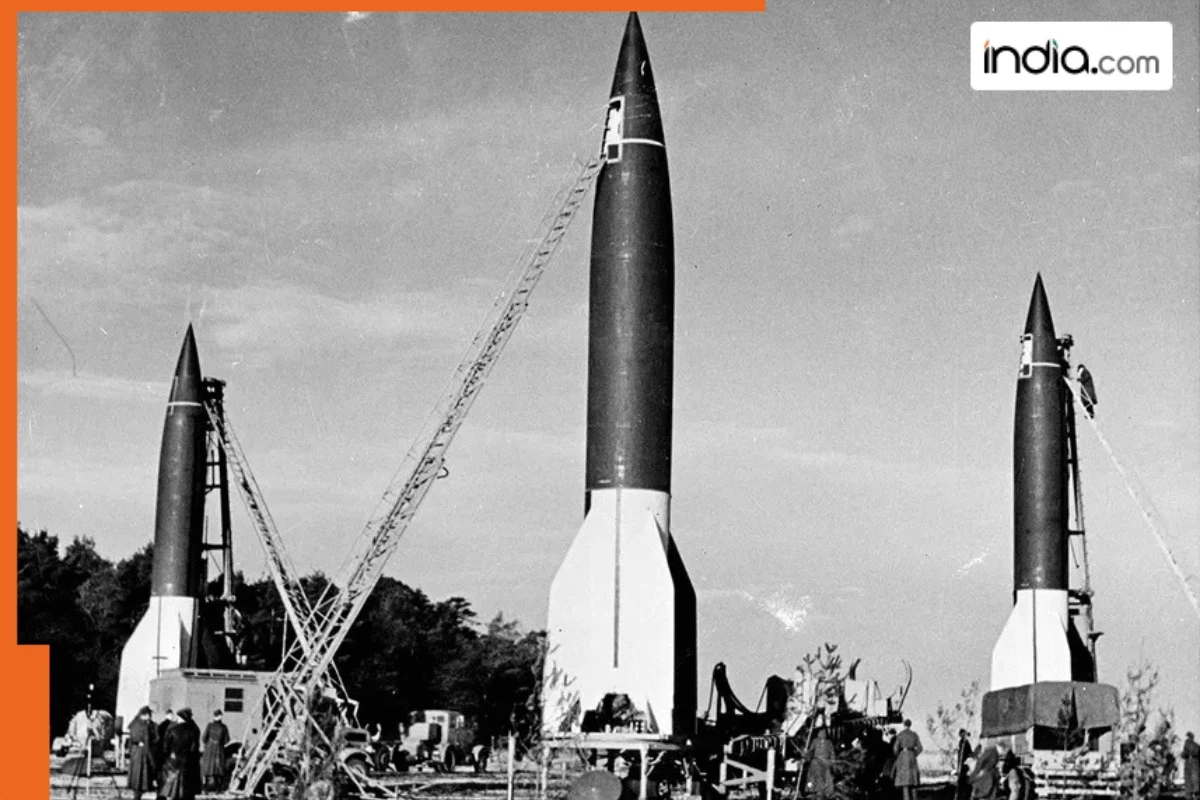World’s first missile: The world’s first missile was developed by two German scientists, Walter Dornberger and Werner von Braun. During World War II, the German dictator Hitler ordered both of them to create a weapon for the Nazi army that could strike from a distance, utilizing combat aircraft or other launchers.
These were the V-1 and V-2 rockets. In 1944, they were used in a barrage of attacks on London. In fact, as early as 1935, German engineer Braun started working on a classified missile programme. Walter Dornberger was the head of artillery for the German army. Dornberger played a crucial role in both World War I and World War II. He was in charge of Germany’s V-2 rocket missile and the Peenemünde Army Research Center project. Following Hitler’s directives, the German village of Peenemünde was converted into a missile manufacturing factory before World War II.
Hitler’s Terrible Blunder
According to a BBC report, these German engineers assured Hitler that success in rocket testing would easily allow them to win World War II. German scientist Albert Speer was also with them, but Hitler did not agree. The Second World War began in 1939, while the missile program started in 1935. However, Hitler approved the programme to create missiles from rockets in 1943. By then, the German army had already suffered defeats on many fronts in the war. If Hitler had granted approval in the early stages, the story might have been different.
Hitler’s Secret Missile Factory
The village of Peenemünde in Germany was turned into a secret missile factory. Peenemünde was located on the banks of the Peene River in an island of Germany, where this river flows into the Baltic Sea. This large tourist spot was where engineers conducted the rocket missile program from 1936 to 1945, as the area within a 400-kilometer radius was extremely desolate.
About 12,000 Jewish workers were assembled for the missile factory and testing. The world’s first cruise missile factory was spread over 25 kilometers. There is a museum in Peenemünde where pieces of rockets, engines, and other equipment are preserved.
Germany’s Successful Missile Test
Germany’s rocket Aggregate 4 (A-4) was successfully tested in 1942. This was the world’s first long-range rocket. It was named the Vengeance Weapon or revenge weapon. The British intelligence agency learned about this rocket factory in 1943. The British Royal Air Force conducted the largest air raid here on August 17, 1943. The factory was relocated to the town of Mittelwerk. After the war, the Allied powers led by the United States, Russia, and Britain tried to acquire the A-4/V-2 missile technology.
The first operational cruise missile V-1 was the world’s first operational cruise missile. Due to its loud motor, it was called a buzz bomb or doodlebug. Between 1943 and 1945, more than 20,000 missile attacks were carried out on Britain and its allied countries using this rocket. Most of these were conducted on London and the Belgian city of Antwerp between June 1944 and March 1945. It had about one ton of explosive and a range of up to 240 kilometers, but it failed to hit its targets. The first attack was carried out from Germany on Britain on June 13, 1944, during Normandy. The British forces were taken by surprise by this new weapon and it was dubbed the flying bomb.
In 1944, Dornberger he was made the chief artillery commander in the German army. But as soon as World War II ended, he was captured again. He was accused of torturing slave labourers for preparing the world’s first missile, the V-2 rocket.
Von Braun was, in true terms, was the missile man of Germany. He developed ballistic missiles for the U.S. Army, making it a superpower. With the help of such powerful rockets, America launched its first satellite. After World War II, German scientists received invitations from allied countries such as America, the Soviet Union, Britain, and France. Von Braun preferred to stay in America. He was part of America’s classified space mission Apollo, which enabled American astronauts to reach the moon. With Von Braun’s rocket technology, America developed intercontinental missiles capable of striking from one continent to another.
